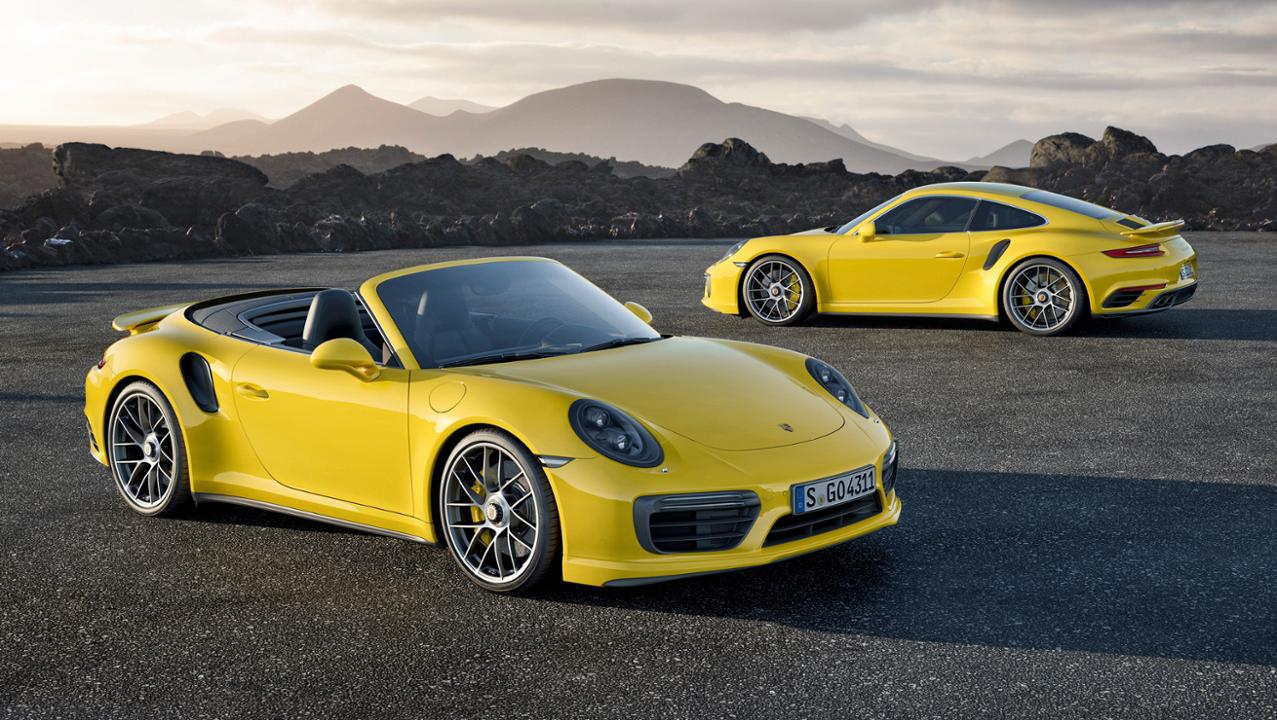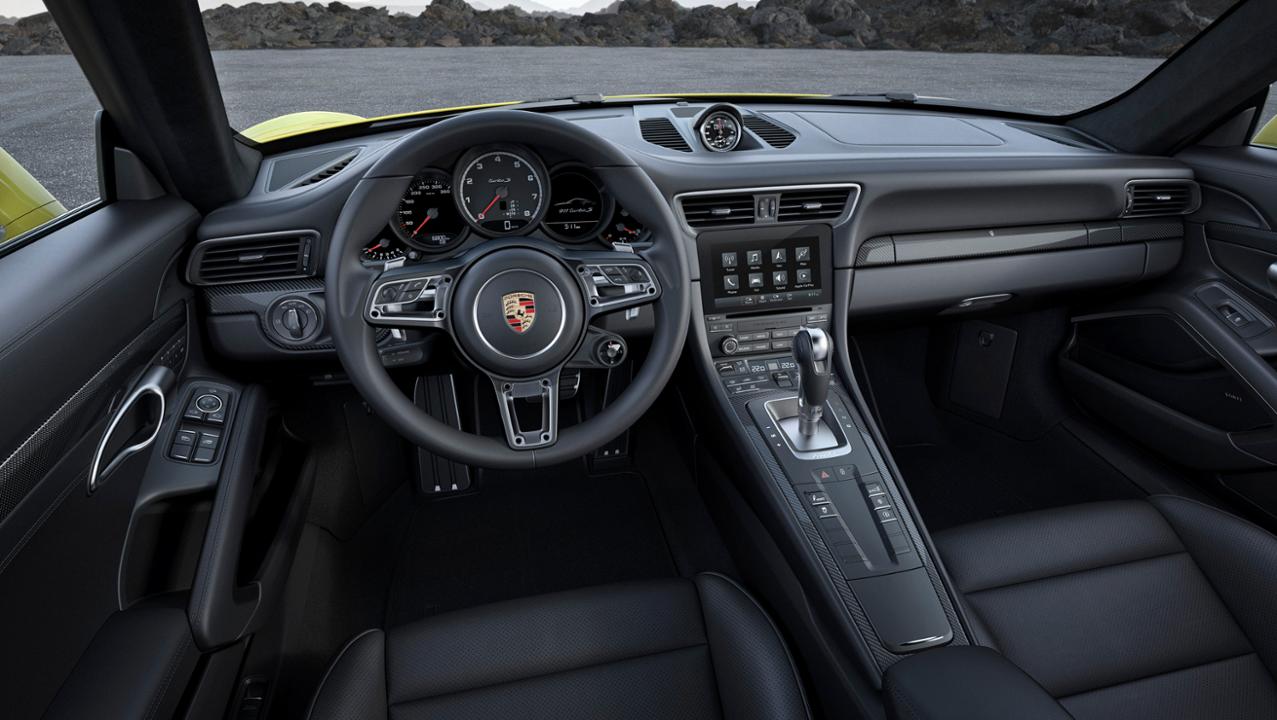The top models of the 911 model series – the 911 Turbo and 911 Turbo S – now boast 15 kW (20 hp, 911 Turbo: Combined fuel consumption 9.1 l/100 km, CO2 emissions 212 g/km, 911 Turbo Cabriolet: Combined fuel consumption 9.3 l/100 km, CO2emissions 216 g/km) more power, a sharpened design and improved features. The models will be available in both coupe and convertible versions from the start. The bi-turbo six-cylinder engine in the 911 Turbo with 3.8 liters of displacement now has a power output of 397 kW (540 hp). This power gain was achieved by modified inlet ports in the cylinder head, new injection nozzles and higher fuel pressure. The 911 Turbo S now develops 427 kW (580 hp) thanks to new turbochargers with larger compressors. Porsche is still the only manufacturer to utilize turbochargers with variable turbine geometry in petrol engines.
The engines now also have what is known as a dynamic boost function to further improve engine response in dynamic operation. It maintains the charge pressure during load changes – i.e. when the accelerator pedal is released briefly. This is achieved by just interrupting fuel injection, whereas the throttle valve remains open. As a result, the engine reacts with practically no delay to another press of the accelerator pedal. The effects of this function are more pronounced in the Sport and Sport Plus modes than in Normal mode.
The 911 Turbo S Coupé sprints to 100 km/h in 2.9 seconds. Its top speed of 330 km/h is twelve km/h higher than before. The 911 Turbo reaches the 100-km/h mark in 3.0 seconds, and its top speed is 320 km/h – five km/h faster than the previous model. The coupes consume 9.1 l/100 km, and the convertibles 9.3 l/100 km. This represents 0.6 liters less fuel per 100 km for all versions. The reason for this is further advanced electronic engine and transmission management with revised gear change mappings.
A standard feature: Sport Chrono Package
The new GT sport steering wheel – 360 mm in diameter and with a design adopted from the 918 Spyder – comes with what is known as a mode switch as standard. It consists of a rotary ring with stepped positions that is used to select one of the four modes Normal, Sport, Sport Plus or Individual. The Individual setting lets the driver configure and store a very individual vehicle setup. Another new feature of the Sport Chrono Package is the Sport Response button at the centre of the mode switch. Inspired by motor racing, it preconditions the engine and gearbox for the best possible responsiveness at the push of a button. In this state, the vehicle can produce optimal acceleration for up to 20 seconds, such as for an overtaking maneuver. An indicator in the instrument cluster in the form of a running timer shows the driver the elapsed time. Sport Response functionality can be called up as often as desired and from any of the driving modes.
Porsche Stability Management (PSM) in the 911 Turbo models now has a new PSM Sport Mode. A brief press of the PSM button on the centre console puts the system in a very sporty mode – which is independent of the driving program that is selected. The separately switched PSM Sport mode alters the PSM’s intervention threshold much more than was the case in Sport Plus mode of the previous model. The new mode makes it possible to approach performance limits more closely – e.g. on a circuit racetrack. In this mode, the PSM warning lamp lights up, and a message in the instrument cluster indicates that the PSM system’s contribution toward driving stability is limited. However, PSM still remains active in background, even in the PSM Sport mode. A long press of the PSM button, though, completely deactivates PSM, as usual.
The chassis of the new 911 Turbo models with PASM as standard now offers a greater spread between performance and comfort. In addition, the 911 Turbo S offers a full complement of equipment for driving dynamics: PDCC roll compensation is standard as is the PCCB ceramic brake system. New options for all 911 Turbo models include the radar-based lane change assist and a lift system for the front axle that can be used to increase ground clearance by 40 mm at the front spoiler lip at low speeds.
Source: Porsche




















